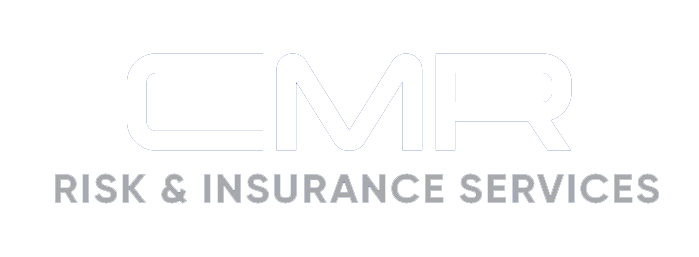Understanding and Mitigating Nonprofit D&O Risks

Nonprofit organizations can benefit their communities in many ways, often providing a range of valuable services and other charitable contributions to people in need. As the leaders of these organizations, board members are responsible for maintaining successful operations and ensuring their nonprofits accomplish key initiatives. While this can be fulfilling work, it also carries some risks.
Specifically, nonprofit board members could be held personally liable for failing to uphold their duties or otherwise acting in a way that negatively impacts stakeholders (e.g., employees, volunteers, donors and beneficiaries). In some cases, these leaders may be required to meet the same standards as corporate executives, posing substantial directors and officers (D&O) liability and litigation exposures.
As such, it’s crucial for nonprofit organizations to review the risks board members could face in their roles and implement necessary mitigation measures. This article provides more information on common D&O exposures for nonprofit leadership, the potential ramifications of associated claims, key risk management strategies to consider and the value of D&O insurance.
Common D&O Exposures
- Nonprofit board members could encounter D&O claims from various avenues. Primary sources of these claims include:
- Mismanaged funds—Board members are typically required to follow predetermined budget plans when allocating and spending nonprofit funds. For instance, a donor may state that their financial contributions are to be spent on a particular cause or service. If nonprofit leaders mismanage this donation or otherwise use the money for unapproved reasons, they could be sued and held responsible for reimbursing the affected funds.
- Breach of fiduciary duty—In addition to properly managing their funds, nonprofit board members have a fiduciary duty to always act in the best interest of their organizations and conduct their due diligence. This duty mainly centers around maintaining detailed and accurate financial records. Such documentation can help bolster leadership transparency by proving that all donations are being used responsibly and limiting the risk of employee theft and embezzlement. Without sufficient financial records, nonprofit leaders could be accused of breaching their fiduciary duty and face serious legal penalties.
- Employment practices—Nonprofit board members may face allegations related to hiring, firing, discrimination, harassment or other employment-related issues involving staff or volunteers. If these leaders are accused of perpetuating or neglecting to address poor employment practices, they could be subject to regulatory fines and related litigation.
- Noncompliance—Board members must comply with their own nonprofit bylaws and all applicable federal, state and local legislation. These regulations lay the groundwork for appropriate governance practices, fair fundraising measures, open meeting standards, financial reporting protocols, data privacy requirements and tax-exempt qualifications. Failure to follow these laws could prompt costly lawsuits, disrupt nonprofit operations or disqualify individuals from continuing to serve on the board.
- Alleged wrongful acts—Nonprofit leaders are expected to prioritize the organization’s mission above their own desires or financial opportunities in the boardroom. By doing so, board members can avoid potential conflicts of interest and other unfair situations. If these leaders leverage their positions to pursue personal benefits or engage in other wrongful behaviors (e.g., fraud or self-dealing), they could be sued for any damage they cause and face additional legal penalties.
Ramifications of D&O Claims
Nonprofit organizations could experience several consequences from D&O claims, such as:
- Financial fallout—Because D&O claims often result in litigation, they can lead to significant legal defense costs, settlements and judgments. These expenses can have lasting financial ramifications, impacting a nonprofit organization’s long-term operational stability and threatening its board members’ individual assets.
- Reputational damage—D&O claims usually result in considerable reputational damage for the affected nonprofit organization and its leaders, ultimately fueling distrust among stakeholders and the public. This can hinder the organization’s ability to maintain employee morale, attract volunteers and ensure a steady flow of donations.
- Unfulfilled missions—Due to the financial and reputational fallout stemming from D&O claims, these incidents can also limit a nonprofit organization’s community service efforts, making it increasingly difficult to reach operational goals.
Risk Mitigation Strategies
Considering the possible ramifications of D&O claims, it’s imperative for nonprofit organizations to take the following steps to limit their exposures:
- Utilize strong governance practices. Nonprofit organizations should establish effective governance policies and procedures by utilizing proper vetting protocols for leadership positions, assigning clear roles and responsibilities for each board member, and promoting ongoing stakeholder engagement. Above all, nonprofits should ensure board member actions consistently align with organizational values.
- Provide regular training. To set their board members up for success, it’s essential for nonprofit organizations to offer routine leadership training. This training should highlight the importance of upholding board expectations and nonprofit bylaws, acting ethically, meeting legal obligations, and fostering a culture of accountability and transparency.
- Maintain financial oversight. Nonprofit organizations must have mechanisms in place to ensure donations and other funds are adequately managed. This may entail having open communication with donors and performing periodic budget reviews. Nonprofits should also keep all financial records up to date and routinely check this documentation for possible errors or other discrepancies, correcting issues as needed.
- Ensure compliance. By maintaining compliance with all applicable employment laws, financial regulations and industry standards, nonprofit organizations can avoid costly regulatory fines and other legal penalties. It may be beneficial for nonprofits to consult legal professionals for specific compliance guidance.
The Importance of D&O Insurance
Besides implementing effective risk management strategies, nonprofit organizations should secure ample D&O insurance. This type of coverage, which can be purchased as a standalone policy or bundled with other commercial insurance offerings, may help reimburse nonprofit organizations and their leaders for losses stemming from these individuals being held liable for their alleged wrongdoings in the boardroom (e.g., misuse of funds, fiduciary breaches or employment discrimination).
Because D&O insurance can provide board members with much-needed protection against potential liabilities in various scenarios, particularly lawsuits, this coverage can help nonprofits encourage qualified individuals to take a seat in the boardroom without fear of facing personal financial losses. This, in turn, can help enhance overall organizational success and stability. Nonprofit organizations should work with insurance professionals to review their coverage options and secure a policy that meets their unique needs.
Conclusion
Board members play a vital role in helping nonprofit organizations fulfill their missions; however, these leaders may face a number of D&O risks in their roles. By understanding these exposures, taking steps to limit the likelihood of related claims and purchasing ample D&O coverage, nonprofit organizations can better protect their board members, allowing these leaders to focus on their communities and serve others.
Contact us today for additional risk management guidance.
Article Published By: Zywave, Inc.
